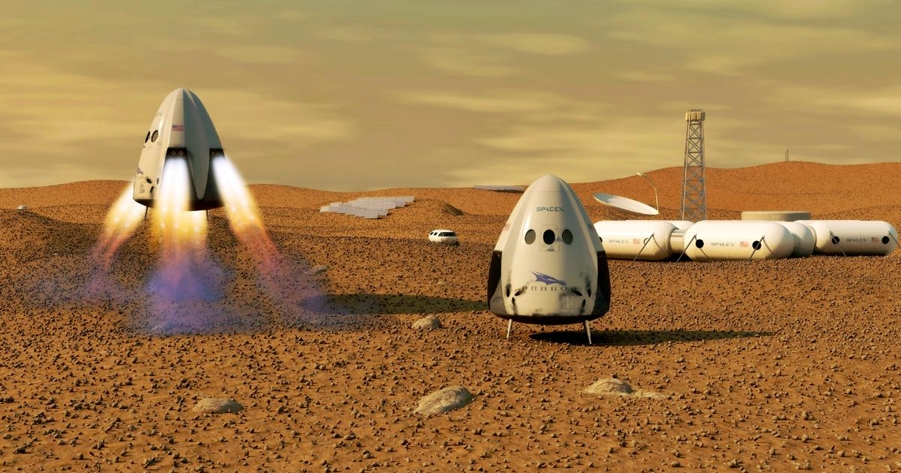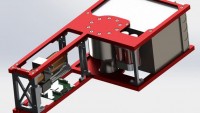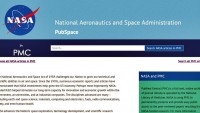NASA Developing Aircraft Wings that can be Folded in Mid-flight
| Arthur Dominic Villasanta | | Oct 29, 2016 11:53 PM EDT |
(Photo : NASA) NASA's Spanwise Adaptive Wing.
NASA recently launched a new program to test revolutionary aircraft wings that fold in mid-flight to improve an aircraft's flight performance.
The folding wings, called a Spanwise Adaptive Wing (SAW), provide the ability to modify wings for maximum efficiency depending on flight conditions. NASA is teaming-up with Boeing and an aeronautics company named Area-I to test SAW that comes with actuators allowing them to fold in mid-flight.
Like Us on Facebook
The SAW concept seeks to enhance aircraft performance by allowing the outboard portions of wings to adapt, or fold, according to different flight condition demands.
NASA engineers believe improved actuator technology will allow them to push folding wing technology further. The SAW system's solid-state actuators might be powered by an all-electric system.
NASA is investing heavily in low-carbon propulsion technologies as part of the agency's Aeronautics Research Mission Directorate. They also developing an all-electric X-plane.
Ideally, the technology will precisely refine wing shape while in flight without burdening the airfoil with extra weight or compromised structural integrity.
An example would be keeping the wings fully extended for maximum lift during takeoff, and then folding the tips down once cruising velocity has been achieved to trade some of that lift for yaw control (the stability of the aircraft around a vertical axis).
"Ideally, we would be able to take that portion of the wing and articulate it up or down to the optimal flight condition that you're in," said Matt Moholt, NASA Armstrong principal investigator for SAW.
"So let's say you're a condition that requires a climb-out. The optimal position might be up 15 degrees or down 15 degrees, and you would be able to get that."
He noted that some wings are so long that to clear infrastructure it has to fold on the ground.
"If we're going to be articulating wings, let's explore the use of an advanced actuator that could enable it to articulate in flight as well, then you can really put the wing in an ideal setting," said Moholt.
"Further, why just take the ground benefit of it? Let's see if there's a flight benefit of it as well."
SAW technology can be implemented at all stages of flight, from takeoff and to landing to cruise, and even at supersonic speeds. Wing articulation might actually produce the most benefits when traveling faster than the speed of sound.
NASA is considering testing SAW on the Area-I Prototype-Technology Evaluation and Research Aircraft (PTERA).
This sub-scale aircraft will be used for initial tests and possesses an array of sensors and research instruments. Early flight testing on the PTERA could occur in early 2017.
NASA plans to simultaneously test much larger actuators that can be scaled-up and implemented on a variety of full-sized aircraft wings.
TagsNASA, Spanwise Adaptive Wing, saw, Boeing, Area-I, Aeronautics Research Mission Directorate
©2015 Chinatopix All rights reserved. Do not reproduce without permission
 NASA Eyes ‘Photonics’ and Laser Communications to Talk to Mars-bound Spacecraft
NASA Eyes ‘Photonics’ and Laser Communications to Talk to Mars-bound Spacecraft Mars Astronauts Face Real Danger from Cosmic Ray Brain Damage
Mars Astronauts Face Real Danger from Cosmic Ray Brain Damage Water-powered Satellite to Orbit the Moon
Water-powered Satellite to Orbit the Moon When Aliens Call, We Shouldn’t Answer, Reasserts Stephen Hawking
When Aliens Call, We Shouldn’t Answer, Reasserts Stephen Hawking NASA Places its Priceless Research Online on PubSpace, and it's Free
NASA Places its Priceless Research Online on PubSpace, and it's Free NASA Celebrates Curiosity Rover’s 4th Year on Mars with a Video Game
NASA Celebrates Curiosity Rover’s 4th Year on Mars with a Video Game
EDITOR'S PICKS
-

Did the Trump administration just announce plans for a trade war with ‘hostile’ China and Russia?
-

US Senate passes Taiwan travel bill slammed by China
-

As Yan Sihong’s family grieves, here are other Chinese students who went missing abroad. Some have never been found
-

Beijing blasts Western critics who ‘smear China’ with the term sharp power
-

China Envoy Seeks to Defuse Tensions With U.S. as a Trade War Brews
-

Singapore's Deputy PM Provides Bitcoin Vote of Confidence Amid China's Blanket Bans
-

China warns investors over risks in overseas virtual currency trading
-

Chinese government most trustworthy: survey
-

Kashima Antlers On Course For Back-To-Back Titles
MOST POPULAR
LATEST NEWS
Zhou Yongkang: China's Former Security Chief Sentenced to Life in Prison

China's former Chief of the Ministry of Public Security, Zhou Yongkang, has been given a life sentence after he was found guilty of abusing his office, bribery and deliberately ... Full Article
TRENDING STORY

China Pork Prices Expected to Stabilize As The Supplies Recover

Elephone P9000 Smartphone is now on Sale on Amazon India

There's a Big Chance Cliffhangers Won't Still Be Resolved When Grey's Anatomy Season 13 Returns

Supreme Court Ruled on Samsung vs Apple Dispute for Patent Infringement

Microsoft Surface Pro 5 Rumors and Release Date: What is the Latest?










